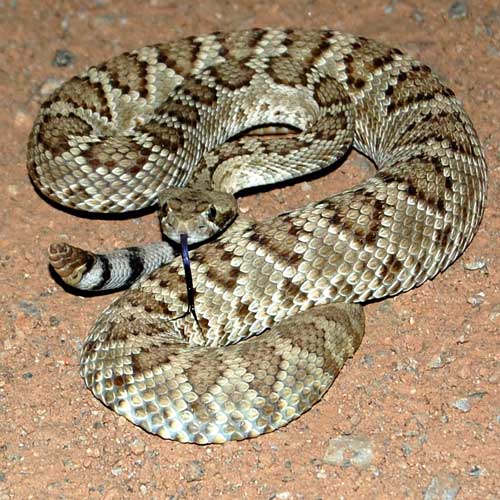Mojave Rattlesnake
Crotalus scutulatus

Vekol Valley, southern Maricopa Co., Arizona. 9 Aug. 2008.
Sponsored Links:
This iconic denizen of the southwestern deserts can strike fear in the hearts of novice visitors. Or else respect and awe in naturalists who take normal precautions. When hiking through rocky or vegetated areas hikers must watch where they are stepping. Never pick up a rattlesnake, even one that appears dead. Remember that the venom is highly toxic, but that quick medical attention after a bite usually prevents serious injury.
Snakes, particularly rattlesnakes, are vital predators in the ecological balance of the desert ecosystems. Without them rodent and rabbit populations can rapidly explode causing great disruptions up and down the food chains.
The Mojave Rattlesnake besides inhabiting the Mojave Desert also is common in the Sonoran and Chihuahuan Deserts. Creosote flats are a frequent habitat where they hunt almost exclusively at night.